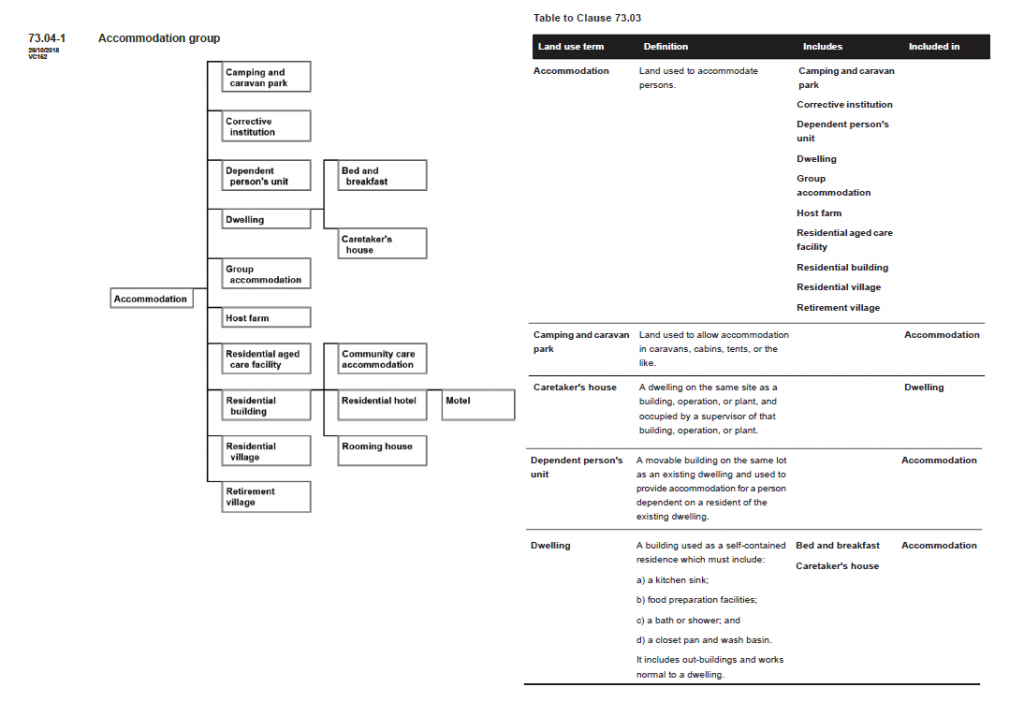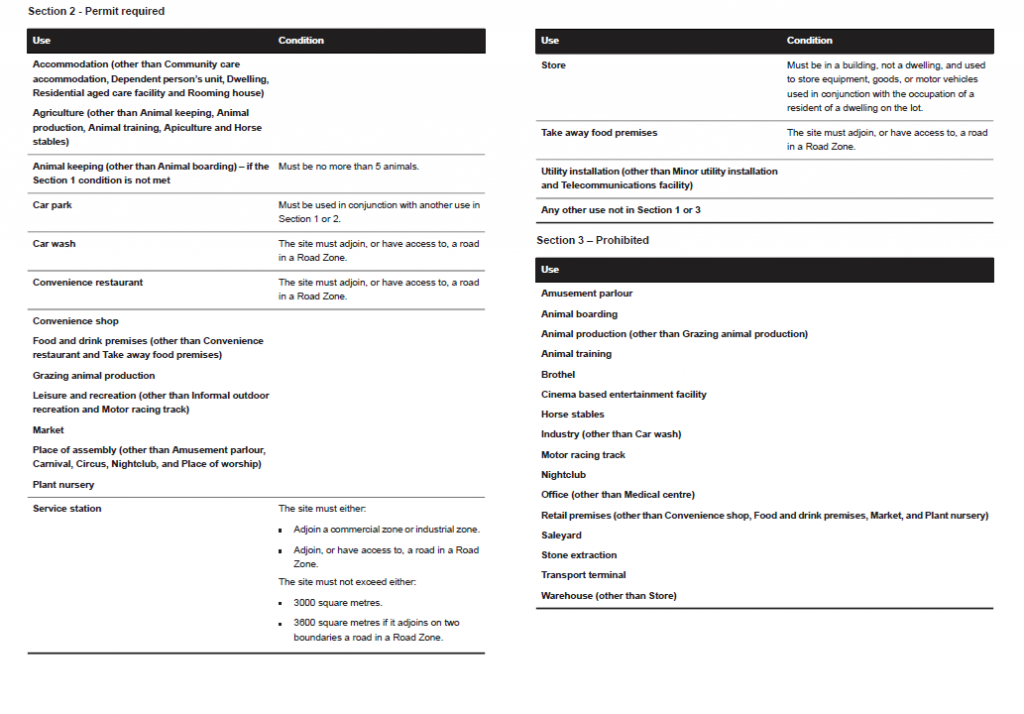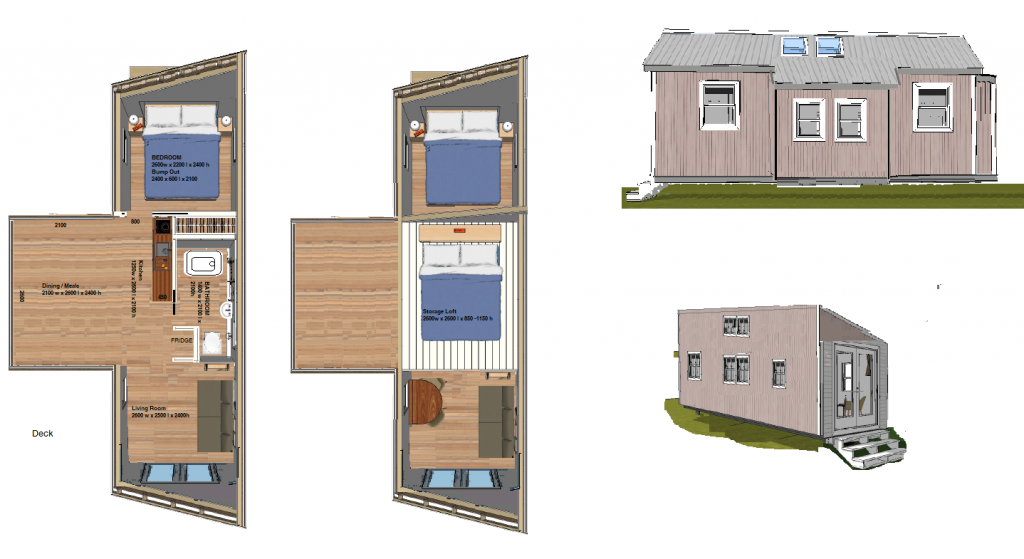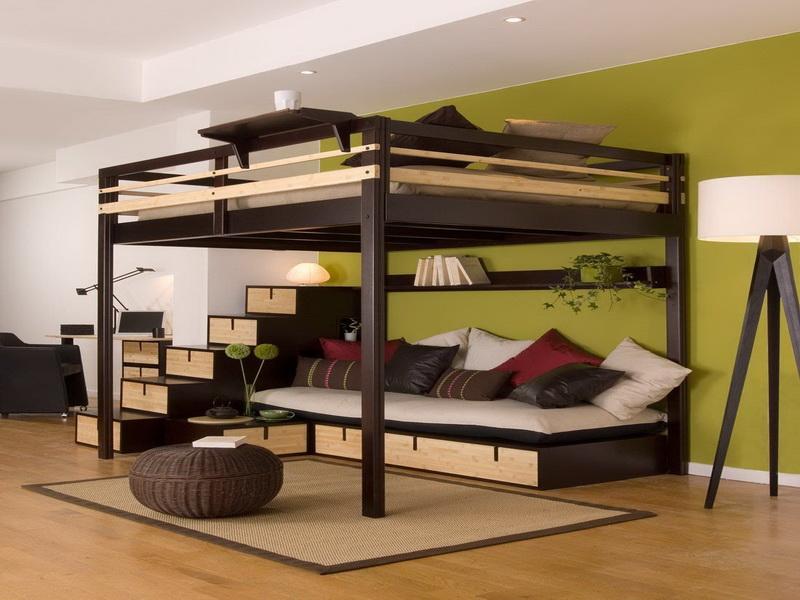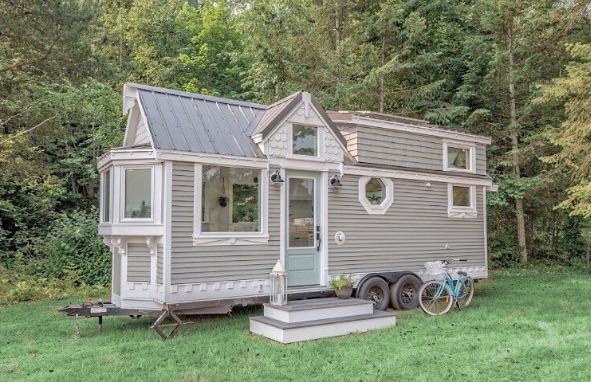
Tiny Living Legally in Victoria Australia.
The question of what you can and cant do legally in a tiny home is confused by the local legal jurisdiction, the philosopy and approach of the legislature and the results of the people who came before you. Each of the Australian States is particularly different where it comes to legislation and rules. I will attempt to describe what I understand the legal position to be in Victoria. I am a lawyer based in Victoria, although I do practice in other eastcoast states. This work reinforces in me to suggest the need to get local legal advice specific to your circumstances in all situation, whether in Victoria or otherwise. This page is legal education not legal advice and no responsibility will be taken for anyone who makes use of this information.
Tiny Homes have grown up on a basis in this country of “Dont Ask Dont Tell” where the tiny home is sited and used without formal approval. This is a lamentable situation as Tiny Home owners are left in legal limbo. Parking a Tiny Home in someone’s backyard is a bit like growing a crop between your tomato bushes. Whatever happens you lose the right to complain to the authorities when something goes wrong. If someone steals your crop the law of the jungle prevails.
With a tiny home that does not have a legal right to be where it is placed you lose the ability to get a garbage service, complain about the dog barking all the time next door, have remedies under consumer law for wrongful eviction. There have also been instances where female tenants were being pressured to provide sexual services by unscrupulous landlords. I do a lot of work in family violence and sexual violence in my professional job so I am overaware of these risks that people are placing themselves in.
My Tiny Home is registered as a caravan so i’m OK … well Maybe …
If you are parked in a caravan park designed for permanent tenants you may be OK – It will cost you a fair bit of money per week but you will have the benefit of Victorian Consumer Laws and a degree of permanency.
But if you want to park somewhere else then registering your tiny home has brought you a lot of trouble. An owner/resident of a residential dwelling can generally park a caravan in their back yard, for storage purposes, indefinitely. Most of the 87 Victorian Councils have a local law “for the amenity of the community” which restricts people living in caravans in the back of a dwelling. The restriction may be harsh or benelevant – permitting 30 to 120 days “useage” of the caravan per year. You may or may not need a permit. Many people have no knowledge of these requirements until a neighbour complains and then you are on the back foot having failed to apply for a permit.
Councils are required to ensure that accomodation is safe, healthy and not causing a public nuisance. People who dont apply for permits often dont connect to the sewer and discharge grey and blackwater into the backyard. If someone is complaining then you are causing a nuisance. The same actions, for example the number of car movements in the street, if you had applied for a permit would have been approved – now they are the basis of you being evicted. In fact the pressure is not on you but on your landlord who will quickly find the battle is not worth it.
If there is no dwelling on the land it is harder to use the land for a tiny house landing site. Special arrangements are often available for owner builders allowing them to live in a caravan while building their dwelling. You need a building permit and you need progress on your major build to have any hope in getting an extension after the first 12mth permit expires.
Councils seem to hate temporary dwellings, people living in sheds, “container homes” that are little more than containers, and caravan’s sitting in a paddock.
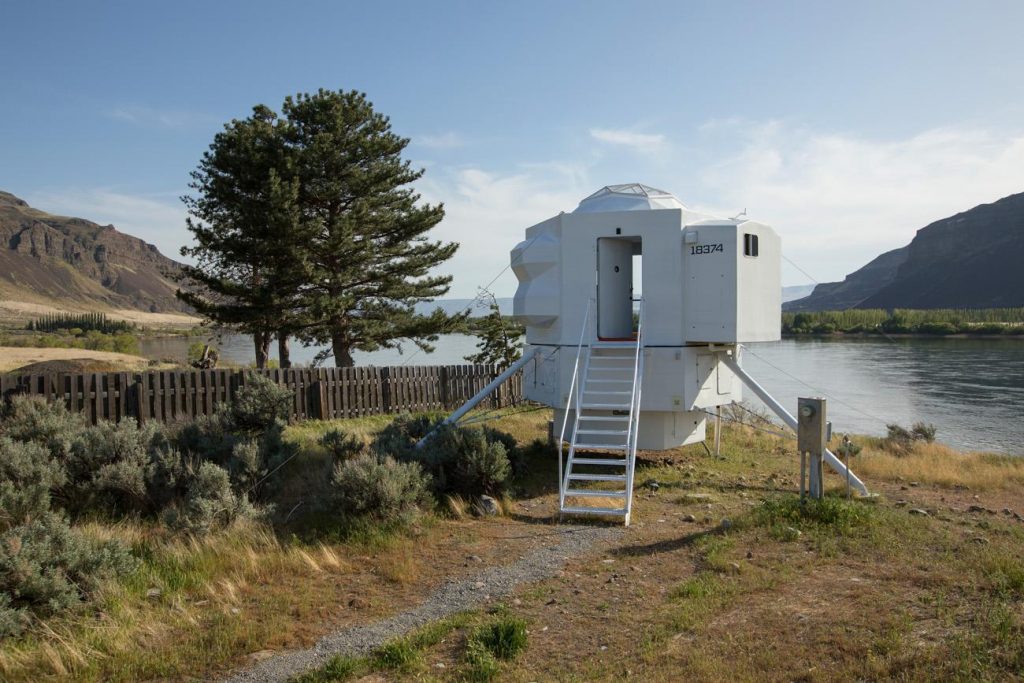
Tiny House Planning
There are three areas of control for Tiny Houses – Planning, Building and Local Laws. I’ve touched upon Local Laws above, and many people rejoice that the Building Code does not apply to Caravans (and thus to Registered Tiny Homes). I struggle to understand why having no or limited construction standards is a good thing. There seems to be a belief in the tiny home construction industry that consumers should trust their builder to do the right thing by them and no external regulation is welcome. Thats worked out fine in other areas hasnt it….
But planning is about what you can do on your land. It attempts to balance appropriateoutcomes for differing communities and does this by having provisions that affect the whole State as well as localised zones that permit or restrict development. From a perceptive of living somewhere on your own land most non industrial or special use zones allow some form of residential use. The zone usually allows only one dwelling per allotment – if it is big enough for multiple dwellings it is usually big enough to be subdivided into multiple lots. We dont really see a market for tiny house allotments at the moment – the tiny house park site is seen as a subsidiary use that goes along with the principle dwelling – like a shed garage or outbuilding but in the case of a tiny house one that someone else can place their residence on a live peacefully.
In Victorian Planning Law there is a very similar situation provided for. A Dependant Person’s Unit used to be know as a Dependant Relatives Unit or Granny Flat. Nowadays in the world of political correctness there still needs to be a level of “dependance” on the owner of the land by the resident of the DPU. Physically the Tiny House could be used as a DPU, as long as the council is satisfied as to this dependance. I can find little in the way of case law describing in detail the dependance required – some councils may not be too fussed about this others can be expected to argue the toss. Generally throughout Victoria a DPU is an as of right use in most residential zones – you may have to apply for administrative approval and whatever is needed by the building department, but you dont need planning approval.
This is a model of what could be done for Tiny Homes and I am a member of an industry and local government committee convened to review and recommend changes in the planning laws in this area. If the definition of the DPU was modified to remove the dependance requirement Victorians’ would have a right to establish a tiny home parking spot in their back yard (It would help if a Tiny house was defined, I would suggest as a housing form that combines self contained cooking, bathroom and toilet). I suspect that there may be resistance to open slather living in caravans in backyards which could have amenity issues so the cooking, bathing and toilet functions are not an unreasonable request. (NSW addressing their housing crisis have adopted the open slather approach to living in backyards – Brisbane city is similar but most other areas apply restrictions)
Nesting in my Tiny Home
Some Basic Planning
Under the Victorian Planning provisions there is something known as a nesting Diagram for Accomodation See s73_04 of the Victorian Planning Provisions
The General term “accomodation” includes all the more specific uses in the chart. Frequently you will see mention of these categories in the “Table of Uses” for individual zones. For example in the General Residential Zone in Table of Uses Section 1 (Permit not Required) you will find Dwelling, DPU and Bed and Breakfast.
So while we would prefer there to be a heading THIMBY in Section 1 (or the more likely changes to the definition of DPU to accomodate persons who are not dependant on the property resident) we are left with another option to legally locate a Tiny Home in the back yard of a General Residential Zoned property (the most common residential zone in Victoria)
A council may grant a planning permit for a section 2 use Accomodation. Accomodation includes a Camping and Caravan Park. A Camping and Caravan Park is land used to allow accomodation in Caravans, Cabins, Tents or the like. A caravan park usually has many sites but there are some in Victoria (Like a High Country Pub with six sites at the rear for passing caravans). There is no reason why land used to allow accomodation could not be designed to accomodate one site only. The registration of caravan parks provides for a fee to be payable for small caravan sites up to 25 sites (17 fee units x $14.81 = $251.77 expensive but not out of the question) Yes there is lots of paperwork but ultimately amenity issues are resolved by the services in the Tiny unit itself, design and siting issues need to take into account siting, amenity and fire safety issues.
There is currently a 10 yearly review of this regulation and I have made a submission to the government raising a number of these issues that impact on a small “Caravan Park” and how Tiny Houses fit into the picture. CPRDReview 0.8
So Then What is a Registerable Moveable Dwelling or a Unregisterable Moveable Dwelling …
Some more definitions: This time from the RESIDENTIAL TENANCIES (CARAVAN PARKS AND MOVABLE DWELLINGS REGISTRATION AND STANDARDS) REGULATIONS 2010
registrable movable dwelling means a movable dwelling that is, or has been, registered or is required to be registered under the Road Safety Act 1986 ; Example A caravan, camper trailer or motor home.
unregistrable movable dwelling means a movable dwelling that—
(a) is constructed on a chassis or in prefabricated sections; and
(b) once installed, is a freestanding dwelling with solid walls and roof; and
(c) is not a registrable movable dwelling.
chassis in relation to an unregistrable movable dwelling, means the composite platform on which the unregistrable movable dwelling is constructed and which is— (a) an integral part of the unregistrable movable dwelling; and
(b) capable of fully supporting the unregistrable movable dwelling at all times;
A tiny home could be either a registerable movable dwelling or an unregisterable movable dwelling – basically depending on the dimensions of the dwelling and or whether it has wheels. If it is less than 2500 wide and meets the other dimensions of a registerable vehicle under the Road Safety Act, whether it has ever been registered or not, it will be classified as a registerable moveable dwelling. If it is over width or over height (even if it can get a permit to move it on the roads, it is not registerable. If it is designed with a removable trailer for stumps or foundations it is likely it will be considered an Unregisterable Moveable Dwelling.
Planning Vicoria Advice re UMD’sPractice-Note-2-Movable-dwellings-in-caravan-parks-April-2017(1)
So why do I care?
One of my main arguments is that there should be structural, safety and consumer protection to people purchasing Tiny Homes. Others in the industry say thats all well and good but the current building system and building code does not accomodate Tiny Houses. That is correct generally but its also incorrect in Victoria as steps have been taken to accomodate small permanent moveable dwellings that are placed in Caravan Parks. Given that I see a world of one site caravan parks throughout the metropolis and I see no real reason to build a Tiny home that is registerable I welcome the changes to the Building Code that have been made for UMD’s.
The building code is the formwork under which all buildings are constructed. There are some major issues in building a Tiny House to confirm with the Building Code Some of these are:
Room Ceiling Heights
In a dwelling a the ceiling height for a habitable room or bedroom is 2400 and a kitchen, laundry, bathroom or toilet is 2100. Different provisions apply to sloping ceilings but generally the average height of more than 50% of the room must be 2400.
With smart design its possible to design a Tiny House to accomodate these heights. My designs are more for older people so I dont emphasise loft sleeping, but in reality a loft is usually part of the rest of the room it is adjacent to and forms part of that room as a built in bed platform – It is arguable that it complies. A second approach is to design a room and add into it a non structural “Loft Bed” item of furniture that gives the required function. The room is compliant – you have just added an item of furniture to double the utility of the existing space.
Energy and Insulation Measures
We have a number of mandatory minimum standards for energy use and insulation use – requirements to gain 5 star energy ratings for a design. The problem is that these measures have been designed around “Normal” houses that are typically 100 – 300 m2 in size. When you divide by the floor area you end up with some unusual results that make timy homes noncompliant.
These issues have been addressed for UMD’s that are installed in Caravan Parks. UMDs have a minimum R rating of 1.5 for Walls and 3.2 for ceilings rather than complicated whole of house assessments.
Bushfire controls are not required for UMD’s installed in Caravan Parks.
You will see that I have attempted to have incorporated into the Regulations for Tiny Homes the Building Code amendments that were made after considerable Timy Home lobbying regardin issues such as loft height, use of ladders etc. See Appendix Q appendix q
It is for these reason that I believe the future includes UMD’s and RMD’s which most people will call Tiny Houses.
I would be happy to receive comments regarding this page

